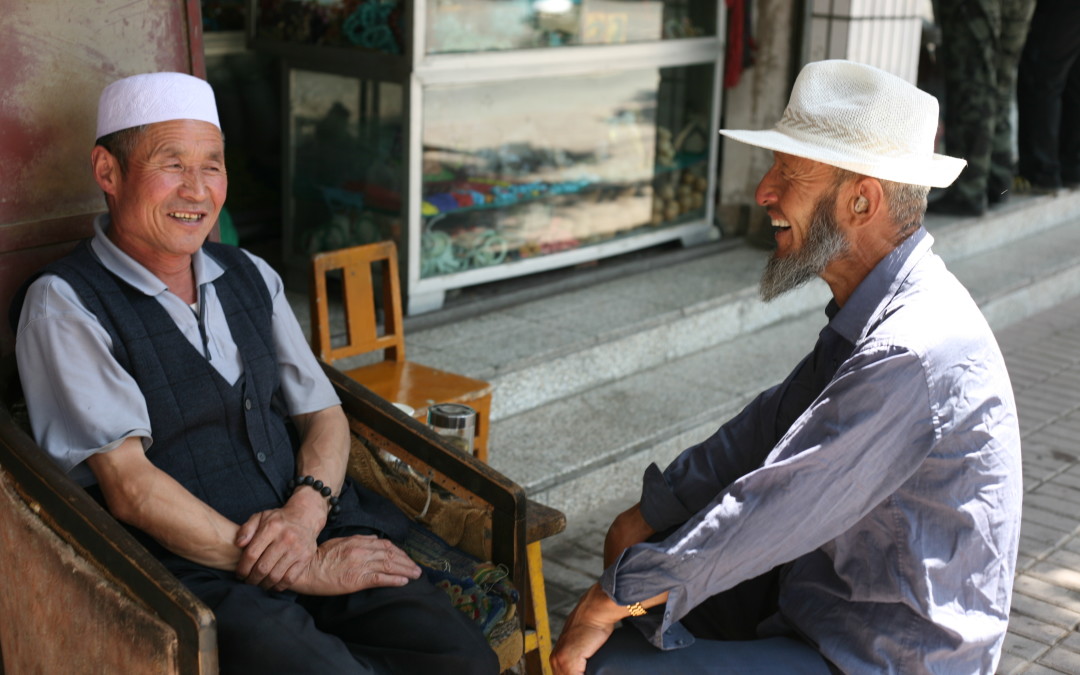Storytelling has been around for generations uncountable. It spans countries, cultures, and people groups. It’s a major component in the lives of people from oral cultures, and it sneaks its way into the everyday lives of people from written cultures as well. Telling stories connects people. A good story can provoke listeners’ thoughts and emotions, causing them to laugh or cry, or to consider something of importance. Stories are interesting, they’re fun, and in working with the Hui in China, telling stories is a strategic tool in pointing people to Truth. Engaging in storytelling among the Hui requires preparation, it seeks a connection, and it can be presented in several forms.
Sharing stories with Hui people is an enjoyable and rewarding experience, but it also takes a good bit of work, especially in the beginning. The Hui speak Mandarin Chinese, so as workers among the Hui, we study Mandarin to be able to communicate. However, along with Mandarin, the Hui people have their own set of words that they use when discussing religious topics. As we learn stories from the Bible, it’s important that we incorporate the vocabulary that they use in order to best contextualize to their understanding.
Methods of learning and remembering stories are different for different workers: Some people spend a lot of time in self-study, reading and listening to the same story over and over until they have a good grasp on it and feel confident in delivering it. Others have a more trial-and-error approach of repeatedly practicing with a friend or tutor to catch and correct mistakes. Whatever the method, no matter how we learn, a lot of time is put into being able to clearly communicate the stories we want to share. Being comfortable with the specific language used in the stories allows us to bring stories to life by telling them with emotion and movement, rather than robotic memorization. Thankfully, despite the work that goes into storytelling, we don’t have to depend on ourselves or our own ability to communicate but instead on the Holy Spirit’s empowerment as well as His working in the hearts of others to get the message across.
As we’re walking in dependence and learning language, the next issue to tackle is determining which stories to learn and share. The Bible has many stories, but where should we start? There are two things that Hui people really connect with: prophets and sacrifice. Therefore, when we tell stories from the Bible to Hui people, we often begin with stories that involve one of these two elements. The Bible and the Quran have several stories that share the same prophets, which is why they’re able to easily connect with these stories. Of course, the prophets of the Old Testament were precursors to the greatest prophet to come, Jesus. As a result, any time we tell a story about a prophet, it always leads to Jesus. Hui people are also very familiar with the concept of sacrifice. Every year they celebrate a festival in which they sacrifice a lamb to Allah. The idea of sacrifice comes up often when discussing their culture with Hui people, which in turn often opens doors to sharing stories of sacrifice from the Bible and the ultimate sacrifice of God’s Son.
When we’re equipped with the language and a story, we look for opportunities to share it. Storytelling among the Hui doesn’t usually come in open mic style, but rather in a one-on-one or small group setting. Hui people tend to be good at hospitality and enjoy having people in their homes, and while in their homes, there’s a lot of sitting, eating, and chatting involved. It’s the perfect environment for storytelling! Simply asking them if they’d like to hear a story is enough to get them tuned in and interested. Oftentimes, we use tools to assist us in telling stories, like pictures or story cards, which help the listener connect with the story and allow for more interaction through questions and comments about what they see. Henna allows them not only to interact with the story but also to have a visible reminder for themselves that’s reproducible and good for sharing with others.
Sharing stories with our friends in their homes is ideal and comfortable, but storytelling can be done anywhere. Because many Hui people own noodle shops and are not very busy after the lunch rush, going to a restaurant in the afternoon and striking up a conversation with the workers is a great way to be able to share a story. Even walking down the street and talking with a friend can pose an opportunity for storytelling. For instance, if the conversation has revolved around gardening (farming is a common job and gardening a common hobby in this area), sharing the story of Adam and Eve in the Garden of Eden would be a natural fit into the conversation. No matter where the place or what the method, being able to present a story from God’s Word is an incredible experience that not only shines a ray of light into darkness, but serves as a motivation to keep learning and pressing on to share more Truth with those around us.
With countless hours put into preparation, cultural awareness to make connections, and exciting moments of presentation, the art of storytelling continues among the Hui people. Through spoken words from the Book of Truth, stories of who God is and what He’s done are making their way into the ears of lost souls. But the work to be done is not only in China; it’s not only among the Hui. The command to make disciples is extended to all believers, everywhere. How can you use storytelling to obey His command and share the Gospel? What’s a story you love in God’s Word, and who can you share it with today?

